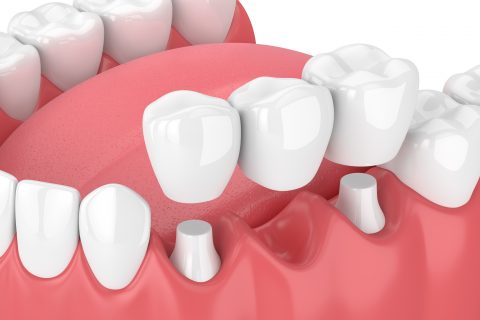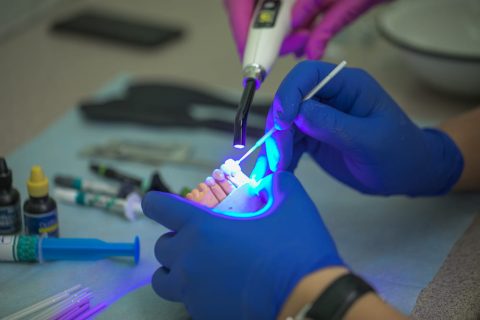Similar to a crown, a bridge is a fixed dental restoration used to fill a gap left from one or more missing teeth. It joins an artificial tooth or more teeth to adjacent teeth or implants. Unlike removable devices such as dentures which you can take out and clean daily, a dental bridge is non-removable prosthetic which can only be removed by a dentist.
Bridges
Bridges
How do bridges work?
A bridge may be recommended by your dentist if you are missing one or more teeth. Gaps that are left by teeth missing might cause adjacent teeth to shift and rotate into the gap which might change your bite. Additionally, the overuse of one side of the mouth for chewing will eventually lead to gum disease and temporomandibular (TMJ) jaw joint disorders.
Bridges are commonly used to replace one or more missing teeth. They consist of two parts – abutments (the teeth that surround the empty space) and pontics – the replacement teeth which are attached to the abutments (your natural teeth or implants).
Bridges are usually made of porcelain, metal or a mixture of the two (porcelain fused to metal-PFM) or zirconia. Your dentist will advise you which to use, depending on the location of missing tooth/teeth, function, aesthetic consideration and cost.
How are bridges made?
You will need two appointments before you receive your bridge.
On your first appointment, our dentist will take impressions of your natural teeth which will help to make a temporary bridge. Once the impression is taken, our dentist will prepare the teeth (abutments) by reducing their size so the bridge can fit properly in your mouth. After this stage, another impression is taken of the reduced teeth which is then sent to a dental laboratory where a technician will use an exact mould of your teeth. During this visit we will assist you to choose the correct shade for the bridge. Sometimes the dentist might send you to the laboratory for correct shade match, especially if you are replacing missing teeth at the front. At the end of the first appointment, our dentist will make a temporary bridge or crowns for the reduced teeth.
Once the dental lab makes your bridge, your dentist will see you for your second appointment. At this visit, the temporary bridge/crowns will be removed and the bridge will be permanently cemented. You dentist will show you how to maintain oral hygiene around the bridge.
How long do dental bridges last?
While dental bridges can last for ten or more years, they can sometimes become loose or fall out. If you don’t practice good oral hygiene, the teeth and the bone that support the bridge might get damaged by dental or gum disease. The best way to ensure longevity of your bridge is to practice good oral hygiene and see your dentist for regular check-ups and cleans.
How much do dental bridges cost?
The price of a dental bridge will vary depending on couple of factors such as the material used, the number of pontics (false teeth replaced) and the complexity of its placement. You can call one of our friendly staff members who will be happy to provide you with a quote.
Need to speak with us? Call (03) 9852 1717
Or contact us by filling out the form below


